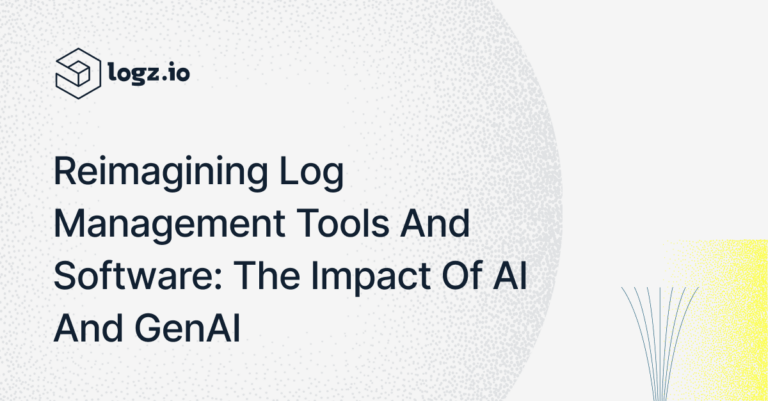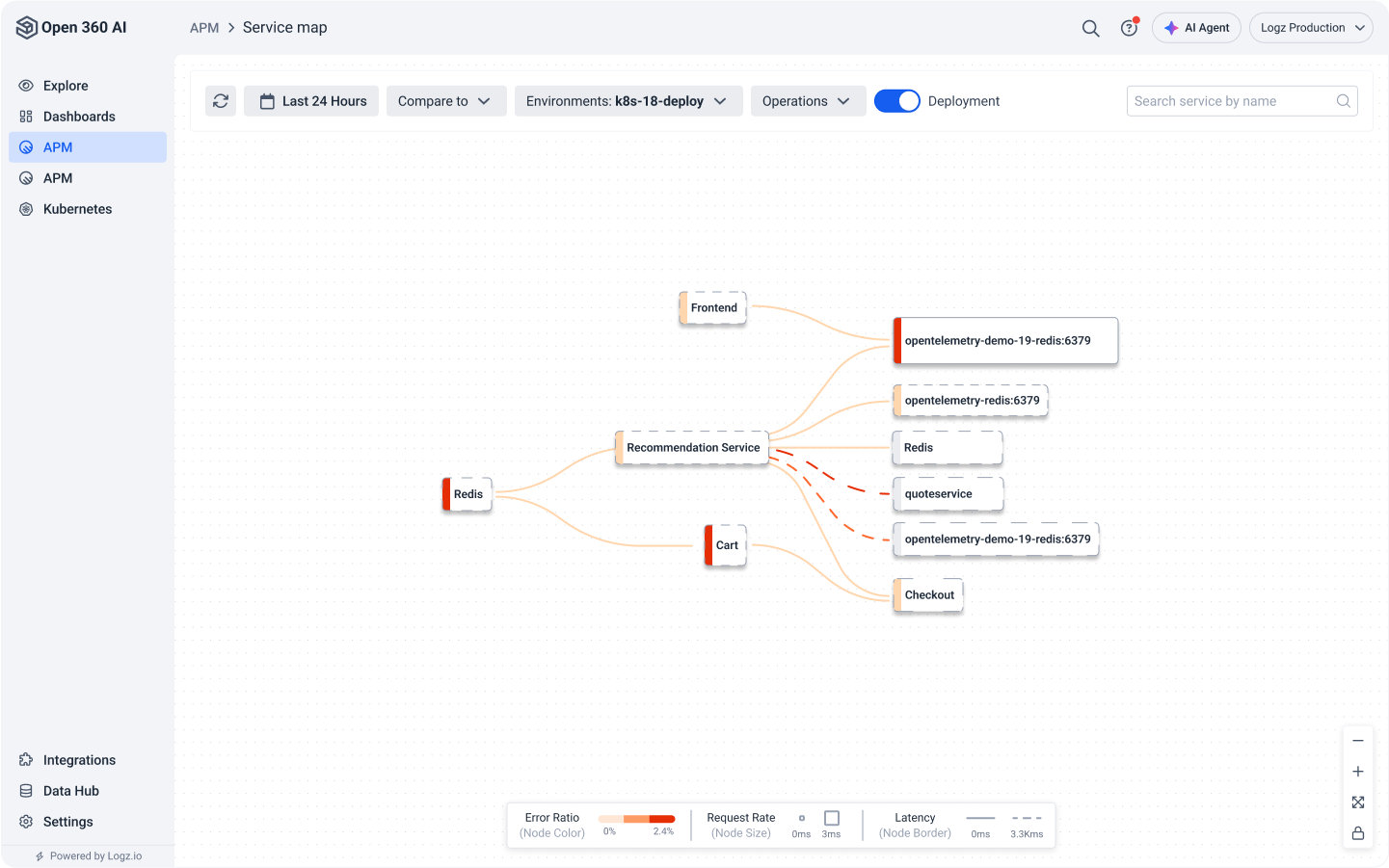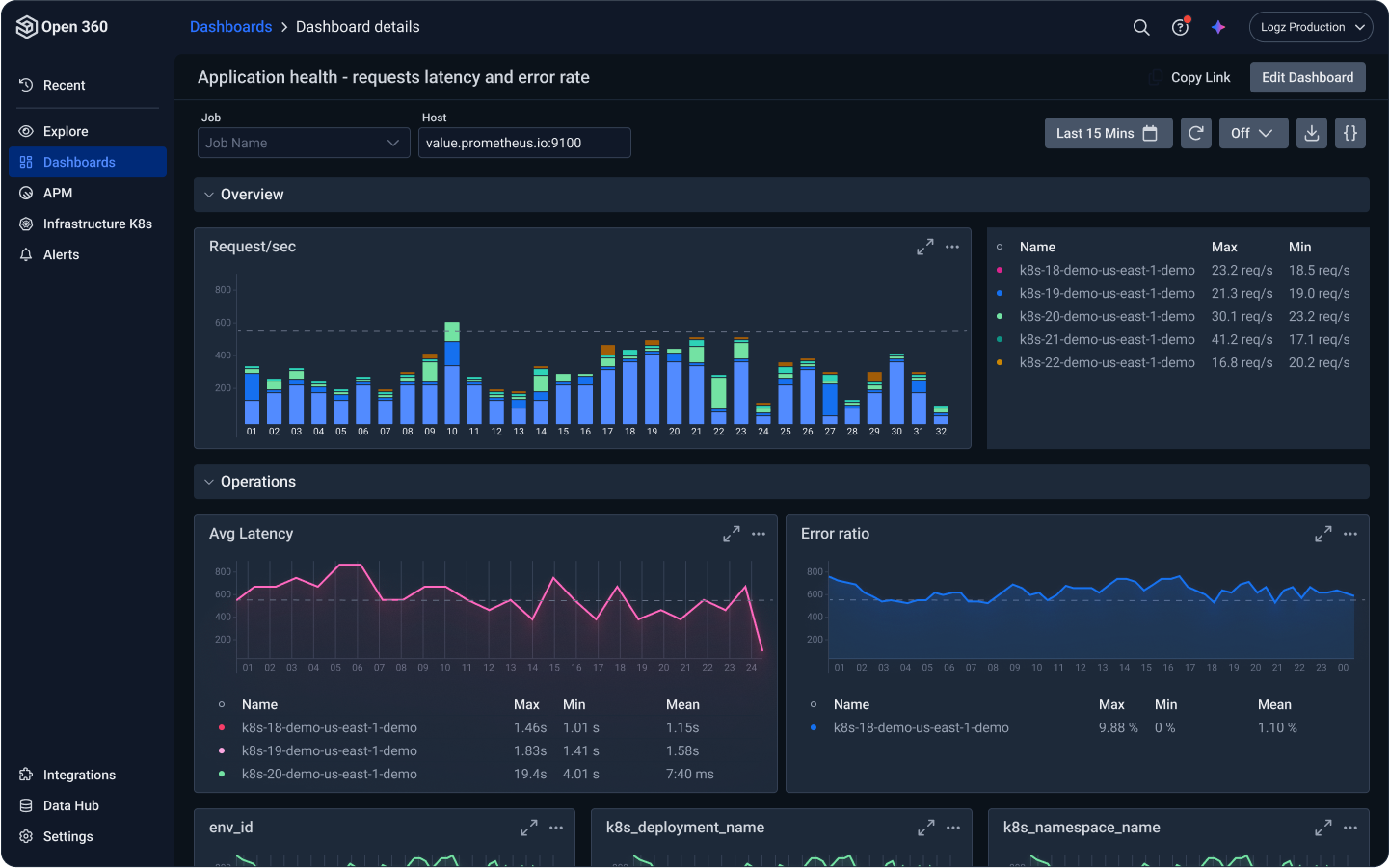
5 Log Management Best Practices for Your Organization
October 22, 2025
At Logz.io, we speak with hundreds of companies every month. One thing is consistent across the board: everyone ships logs. But the challenges are equally common: What are the best practices for logging? How do we reduce noise? How should we architect our logs to make them truly useful?
The reality is that logs are noisy for everyone. The best time to standardize your logging practices is when you write your first line of code—though that rarely happens. The second-best time is now.
Log Management Best Practices
Here are several logging and monitoring best practices that can make your logs more structured, efficient, and actionable:
1. Standardize your format.
Use a consistent log format like JSON, and adopt a structured logging library such as Bunyan, Winston, or Serilog.
Uniform structure ensures logs are machine-parsable, easy to index, and predictable. This consistency simplifies correlation across services and improves pipeline reliability. The result – no surprises for whoever’s parsing or querying the data downstream.
2. Use Log Levels Strategically
- Errors should always be logged.
- Warnings are usually important but may only need to be retained for a short period of time. Assign severity levels (error, warn, info, debug, etc.) to categorize log importance.
- Debug logs are valuable but best stored in a warm or cold tier to manage costs effectively.
Well-defined levels make filtering, alerting, and retention policies effective. You avoid noisy dashboards and keep storage costs under control.
3. Add Context for Correlation
Include metadata like cluster, pod ID, user ID, or—ideally—a transaction ID in each log line. This makes it possible to correlate logs with metrics and traces. You can then follow a single transaction across microservices and connect logs to metrics, enabling faster and more reliable troubleshooting.
4. Prioritize Security Log Management
Avoid logging sensitive information such as passwords, tokens, personal identifiers, API keys, or personal data. Always scrub or mask these values before they enter your system to stay compliant and secure.
Logs often end up in shared systems. Without sanitization, they can leak secrets, expose compliance risks, or even enable breaches. This is why security logging best practices matter.
5. Convert Logs into Metrics
Ask yourself if you really need every 200 OK stored as raw log data. Often, these can be converted into metrics, instead of storing every instance.
Raw logs are verbose and expensive to retain. Converting them into metrics keeps operational visibility, improves efficiency and reduces unnecessary data retention – cutting costs and noise.

Log Management with Logz.io
Logz.io is an observability platform that offers log management capabilities powered by AI for uncovering issues faster and in a cost-effective manner.
Key capabilities include:
- Ingestion, parsing, indexing, storage, query, correlation, scale, security and alerting
- AI / ML-powered troubleshooting: anomaly detection, root cause analysis, conversational querying (via an AI Agent)
- Data filtering of unused and unnecessary data, for data control and cost reduction.
- Multi-tiered storage (hot, warm, cold) to balance performance vs cost.
- Log to metric conversion to reduce storage and indexing costs
- Advanced alert customization
- Integration into the developer stack: Slack, PagerDuty, and more.
- Expansion to full observability (traces and metrics)
- Reports and dashboards for advanced analytics, drilling into root causes and tracking trends over time.
FAQs
What are the risks of poor log management?
Poor log management makes it harder to detect system failures and, obstruct incident response efforts, lead to inefficiencies in debugging and troubleshooting, and increase downtime costs. Over time, the lack of visibility can also cause compliance failures, data loss, and reputational damage due to poor auditability.
How do log management best practices improve compliance audits?
Compliance standards like GDPR, HIPAA, and SOC 2 require detailed audit trails that demonstrate accountability and system integrity. Following log management best practices ensures those audit trails are both complete and verifiable, allowing organizations to respond to auditor requests.
How can distributed organizations streamline log management?
Implement a centralized log management platform like Logz.io that aggregates and normalizes logs from diverse environments into a single, searchable system. Using OpenTelemetry for consistent instrumentation, automated parsing pipelines, and secure data transfer helps maintain integrity and visibility across the stack. Retention policies and tiered storage optimizes costs while ensuring critical logs remain accessible for analysis or compliance use.
What’s the role of AI in modern log analysis and monitoring?
AI-driven analysis detects anomalies, predicts incidents, and even identifies root causes quickly, at scale and in a more advanced manner than manual analysis. Platforms like Logz.io leverage AI to reduce alert fatigue, surface hidden correlations across logs, metrics, and traces, and recommend actionable insights.
How often should log management policies be reviewed?
At least annually and also following major infrastructure, compliance, or business changes. Each review should assess retention periods, access permissions, compliance mappings, and storage costs to ensure they align with new regulations and operational requirements.



